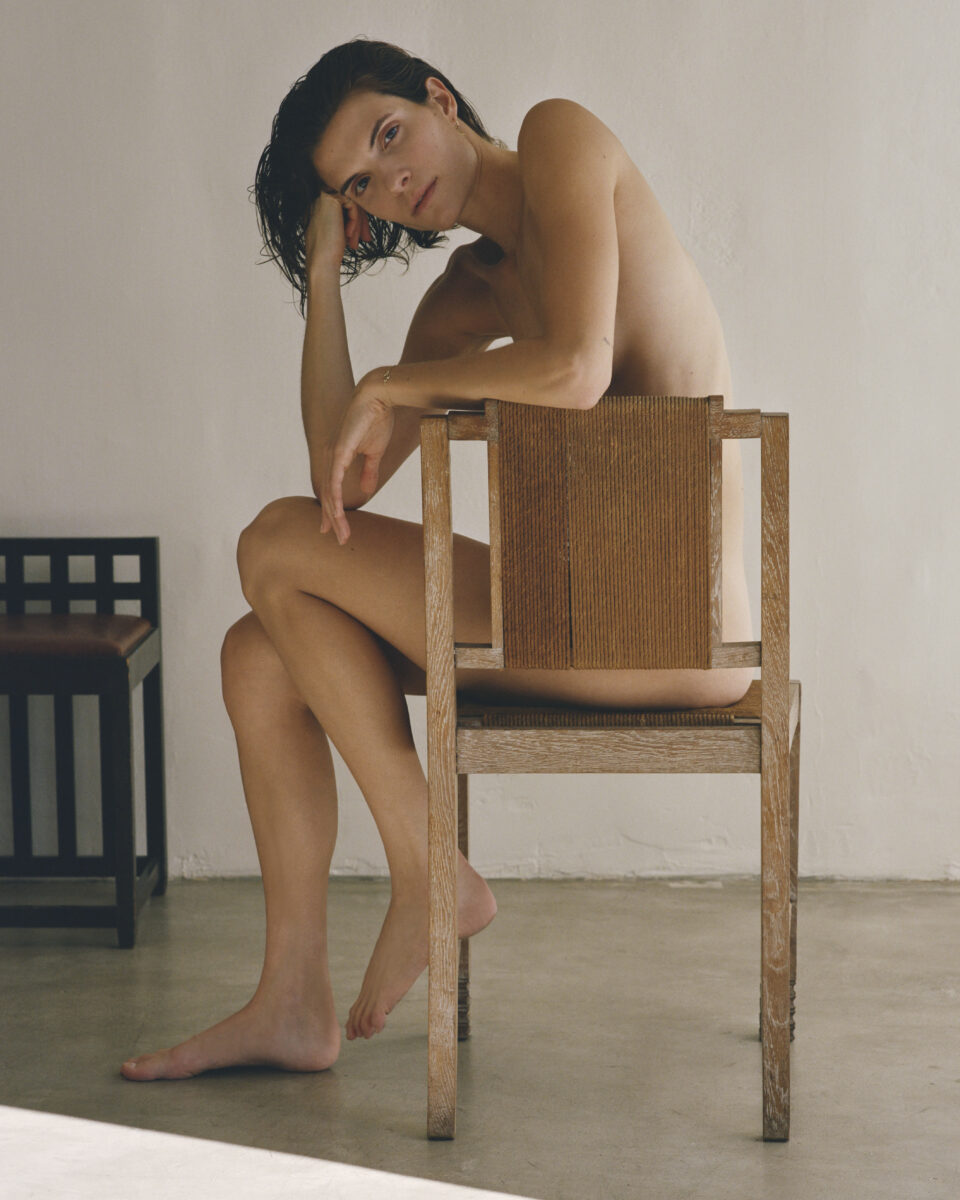Maryam
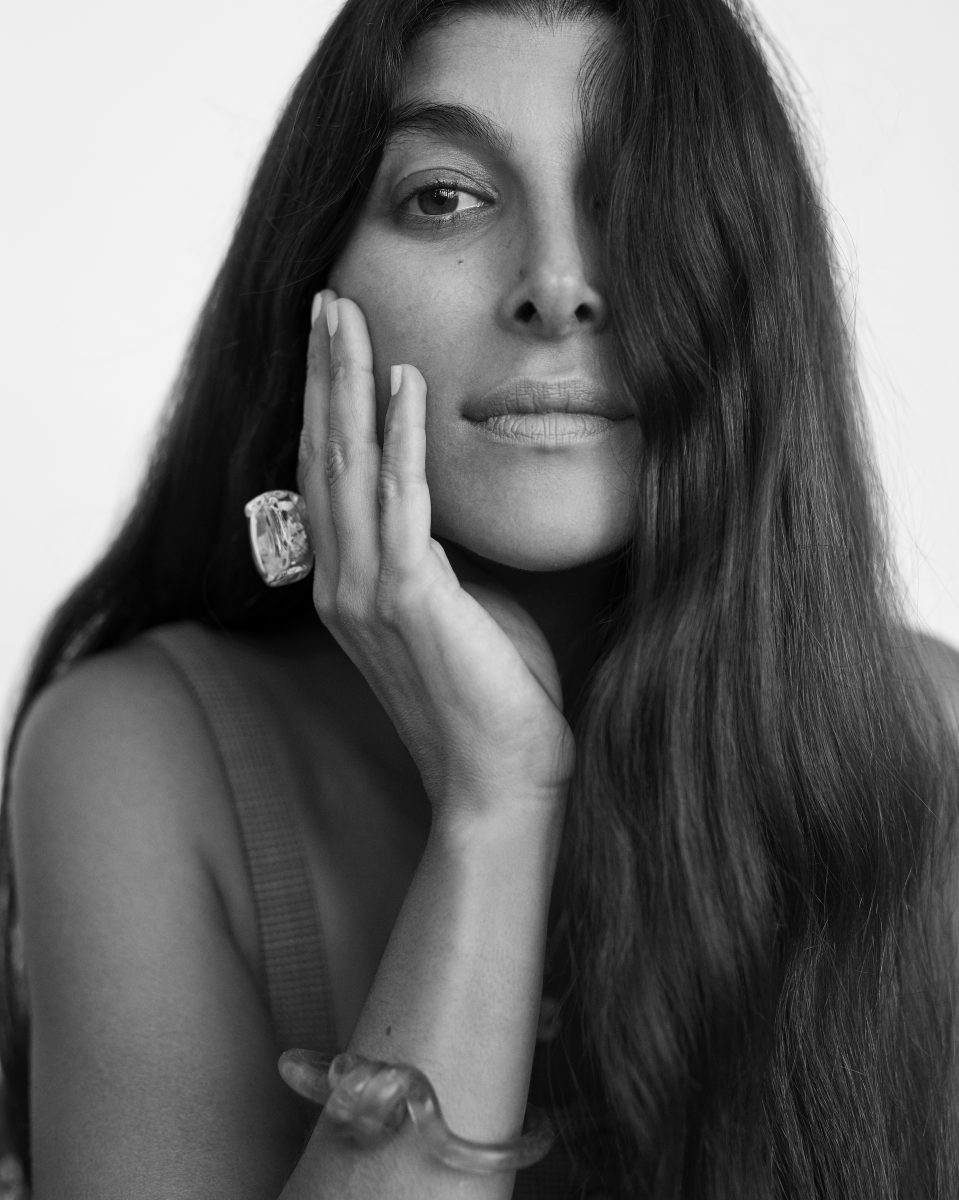
- Photography byAlexandra Nataf
- Styling by Ilona Hamer
- Words by Nicholas Goodman
18
The story of America was written in the Lower East Side. Before the luxury condos and chain stores, this swath of downtown Manhattan was defined by immigrants. More than any other place in the United States, the LES was the quintessential embodiment of their experience, and where they constructed American citizenship from the ground up. As each group set their own place at the table, the neighborhood was ceded to new nations of hopefuls. It was a refuge, gateway and ladder for countless individuals that aspired to make it in New York. Their enterprise, hustle and energy are what fashioned this city.
Parts of the LES still have the feel of an immigrant community, and it is still a place that attracts outsiders with ambition, wits and vision. For the last decade, it has been a kind of biosphere for the creative evolution of Maryam Nassir Zadeh. Maryam is many things—a mother, designer, entrepreneur, and a brand. She opened her namesake store on Ludlow in 2008, just ahead of the looming financial crisis. Part concept boutique, design studio and social club, it typified the creative ethos that runs through everything Ms. Zadeh has lent her name to since.
The idea of a concept store was not a new one, but Maryam’s vision was. She used it to create a space that embodies the best of its European predecessors, while still feeling very much of New York. In the spirit of both, the store has become a temple to authenticity and individualism. From her edit each season, to the atmosphere, design and display inside—it is immediately apparent that this is an individual that’s never lacked for strong instinct, a point of view or impeccable taste. It was only a question of when she would mobilize her profuse talent and design a line of her own.
For the uninitiated, stepping into Maryam’s store, or attending one of her shows, can be a bit humbling. After all, once you’ve been permitted access to her world and experience the full richness of it, you will undoubtedly grasp for the first time what is meant by the term, aesthetics. The community that is drawn to her are not simply customers, or admirers of her work, they become adherents to her approach to life, and many among them, her friends.
Where most brands struggle to engineer an aura of authenticity and creative independence, Maryam communicates both instinctually. She has never been driven by trends, or by what others deem interesting or expensive. Her only focus is to make beautiful things, and equally, to share what she loves. This desire, to share the things, experiences, and people that move and inspire her is one reason she’s beloved. It has certainly attracted a legion of important, cool, and very vocal supporters.
For them, and for us, Maryam is the designer who most exemplifies what it means to excel in New York. She really lives her life. You can tell she’s not consumed with winning attention online, or fawning over the famous to get notice. She is utterly authentic in all aspects of her work and life. More than a designer, and more than her store, she is becoming a kind of patron to the creative women and men of New York. She has many faculties in excess; her greatest may be her ability to connect with people, to disarm them, become their peers and from that, build something creatively that would otherwise never exist. This is Maryam Nassir Zadeh in her element, immersed in what she loves; creating something to share with the people she loves.
Unconditional: Let’s begin with your recent show. How did that idea come about?
Maryam Nassir Zadeh: Showing a collection is still a relatively new thing for me; initially I was terrified by the idea. It was only after having the gut feeling to take the next step that I decided to have presentations. For the most recent show, I kept coming back to the East River running track. I wasn’t sure of what I wanted to convey, and then one day it all became very clear. It was about returning home and connecting with my past, specifically, movement and running and working with my hands. Those are all big parts of who I am that have been dormant the last few years. I wanted to celebrate that idea of reconnecting with yourself. It’s about movement, progression and independence, how each person is on their own path but they’re also a part of something larger together.
The track felt symbolic, because it was such a personal space for me over the last year. It was the place I went to feel like I was at home in a part of the city I’ve lived in for the last eight years. It was a place of reflection, meditation and empowerment. I would often bring my daughters with me and run with a crystal in my hand, soaking up the sun, and thinking about all that I was so grateful for. For the presentation, I had this vision of my women wearing my designs, circling the track in the same way I did, as a direct representation of where my spirit was the last year.
We weren’t able to get a permit, but I knew there wasn’t another location that felt authentic the way the track did, especially for this collection. The day of the show we weren’t sure if it was going to get shut down. We had no dress rehearsal, the girls got dressed at the store and we all took a bus there. It was such a fun adventure. When we got there it was so calm, almost as if it was our space, our platform. Having Solange perform while the girls walked was such a magical, surreal moment. It’s been a dream of mine to work with her, and we had been in touch for months about the possibility of collaborating. It was one of those rare times where everything comes together in the most unexpected way. It felt very spiritual and liberating. We all felt it. That show was inspiring because I trusted my instincts completely. I felt more connected to my self after that. Even if you aren’t in control, as long as you follow your own heart, and it’s sincere, people will connect with it.
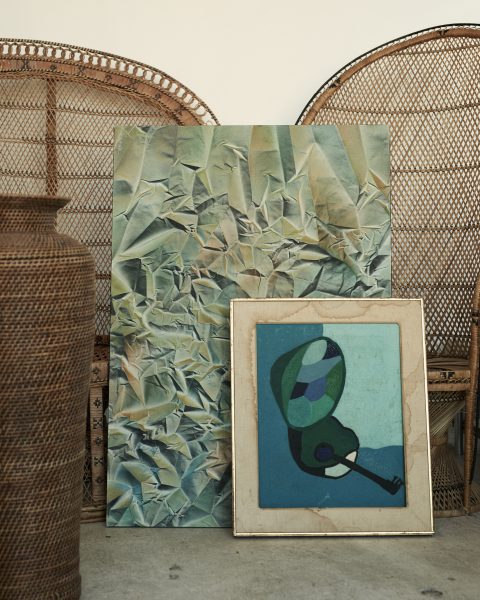
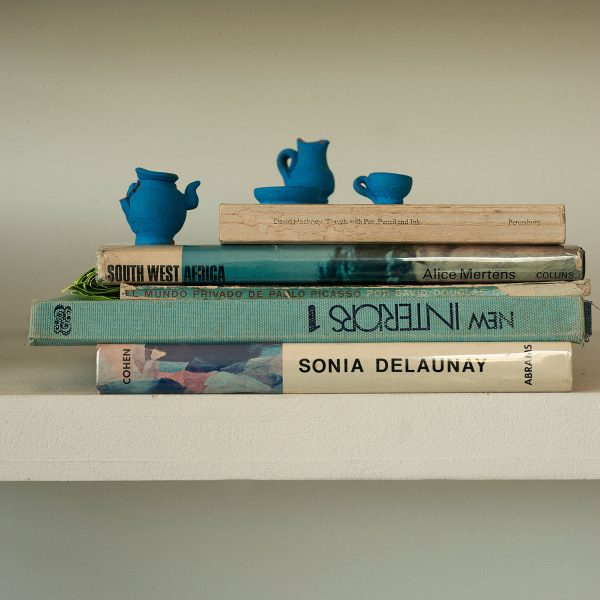
UM: What first brought your family to the U.S.?
MNZ: My parents left Iran in 1978, just before the Revolution; I was three months old. They wanted a more liberal life for us, and they had some money saved, so we moved to California. They only knew a handful of people, one of which was my aunt on my dad’s side. They decided to open a restaurant together called The Salad Bowl, even though they had no idea about business. After a few years, they closed that and started over again. My father went to work for the Department of Water and Power and got his MBA, and my mom stayed at home. He graduated, opened a mortgage firm, and they both worked there together. They came a long way since they first came to America. They had to start their lives over many times. It was beautiful to see how they evolved, and I learned a lot. They always made sure I felt secure; they were so strong and careful. Even when we struggled, I always knew everything was going to be okay from their love and care.
UM: What brought you to New York? What is it about the city that keeps you here?
MNZ: I came to New York to study at Parsons. After graduating from RISD in textiles in 2001, I moved back to LA and started a collection and before I knew it I had a brand. That lasted for four years, until I realized I was too young to be managing a business so I decided to go back to school. I really wanted to develop and do more creatively. Now, I have the store, showroom and design studio all within a one-mile radius in the Lower East Side, which makes it very convenient to manage everything. My community is so strong and vibrant here; it really feeds my creativity and keeps me balanced. I’ve lived here for eleven years now and I feel like it gets better and better. I continue to settle in and discover new parts of the city to fall in love with. I have my little rituals in certain neighborhoods that always make me feel at home, even when you’re in the midst of the intensity of the city. I love my life in New York. Alongside the routines that keep me grounded, each day is completely different from the next. That, as well my constant travels, gives me perspective and inspiration. It’s always the best feeling to leave the city for a bit, and so special when you come back.
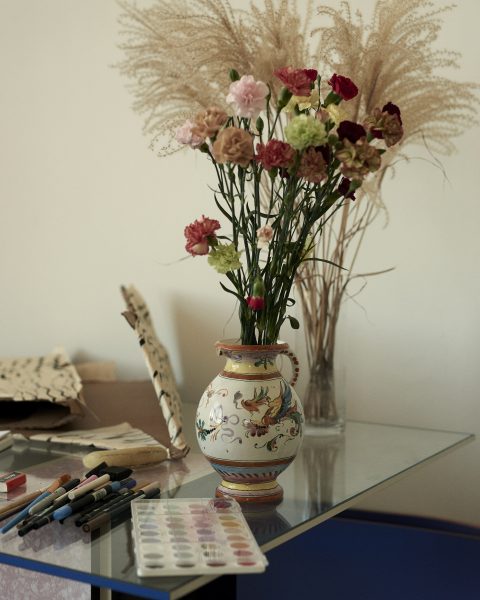
UM: Where does your understanding of fashion come from?
MNZ: I remember when I was five, staring at an Esprit woven plaid in my closet and being mesmerized by the pattern and weave. My grandmother also loved fashion and she was a big influence on me. In her twenties, she studied at the London College of Fashion, and then opened an avant-garde boutique in Tehran in the 70’s called Mimi. She was a milliner and would make these beautiful handmade hats, traveling to Italy and France to import the things that she couldn’t get in Iran. Her store was so unique and modern. Even today, when I look at pictures, it’s still the most inspirational space. I wish our store looked like that! It was ahead of its time, and yet absolutely timeless. She used to sew us matching outfits when I was a kid, and when I was in high school I spent a summer with her in London and she taught me how to sew. She really showed me the process, step-by-step. She still sews; it’s her greatest love.
UM: How much of your creative identity do you think comes from being Iranian?
MNZ: It’s hard to put a finger on. I left Iran when I was three months old and unfortunately haven’t been back. I think it’s a mystery to me, and I also feel there is a mystery to my aesthetic. I think you can recognize my style, but I also think there’s a sensitivity that’s hard to place. It’s subtle in its specifics. I feel like its roots are always evolving; there are layers of different cultures that influence me creatively: Iran, London, Mexico, India, New York, California. But in the last few years I’ve really been drawn to Italy and Spain. I think my style is a fusion and I know there is an element of my Iranian heritage that permeates into my work. But I think that my work feels more international.
UM: What first motivated you to open your store?
MNZ: My boyfriend at the time, Uday Kak, who I later married, was the one who first motivated us to open the store. I had just graduated and was considering moving back to LA. In the meantime I was working at my friend Molly’s vintage store called Narnia, and he would always come visit. He saw me in that context and had a vision that I should have my own store. At the time, I just wanted to be a designer; the idea of owning a store was terrifying. He really believed in it, and in me. We put together a business plan and started looking at spaces. It was all so serendipitous; it took less than five months from conception to the opening. I’ll always be so grateful to him for that. I didn’t know it beforehand, but the store really nurtured my creativity. It was so personal and became a natural extension of me. I wouldn’t have had the idea on my own, or the confidence, without his support. He established the aesthetic for space and images that are still a part of the brand’s identity. It was really a fusion of both of us, and we gave birth to it together.
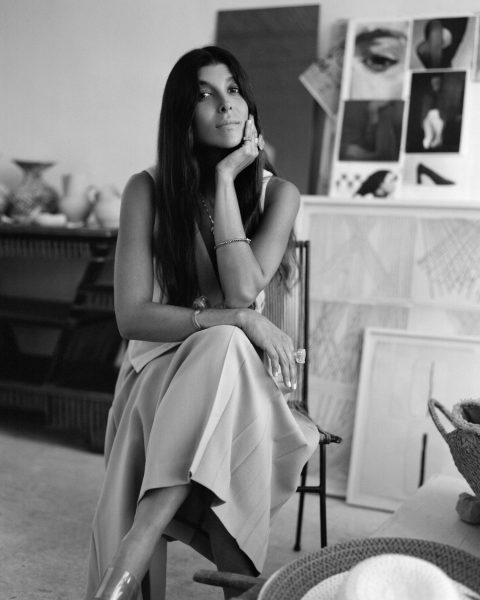
Maryam on sharingSometimes, I don’t mean to be so public but it’s hard for me to separate my life and my work. They’re both one and the same, and both are important to who I am and how I express myself.
UM: Can you describe what the retail landscape was like? How has that changed?
MNZ: We opened in 2008 just before the economy crashed. We had no idea what was ahead of us. There were so many spaces available for rent in the neighborhood; it was really a time when everything was changing. We had to learn what customers wanted and adapt quickly to survive. When we first opened, it was about experimenting to be ourselves and share what we found to be beautiful in order to sustain. People weren’t really investing in clothing. It was all about jewelry and very special, one-of-a-kind items and also travel finds that attracted people. Over the years our store became more luxury based. Now that we have our own brand, a key item that people love is our shoes. Now, I think we have our formula down, but we still always want to buy objects, art, and other things to keep the spirit of the store. Now, our priority is being true to who we are and being very organic in the way the store evolves.
UM: How soon after opening did you begin thinking about ways to expand your universe?
MNZ: I really felt it was important to wait a while after opening the store. It was an interesting exercise for me because I knew I wanted to be a designer with a namesake brand. But I knew that the store was special and that I needed to put 100% into it. It was also immensely fulfilling creatively so I used it as an exercise, to train my eyes to be creative and expressive without using my hands to make something. I used my eyes to buy, merchandise, style and consult with people. All of that was very new to me and fed me until the time was right to design again. I waited until 2012 to begin conceiving it and by Spring 2013 I had a small collection of shoes and clothing.
UM: Were you thinking of anyone in particular when you were designing the label?
MNZ: I was thinking more about myself and designing a dream collection. I wanted to create pieces that I wanted to wear, what my ideal style was and highlighting those things that I already loved.
UM: Do you have a starting point for creativity?
MNZ: It changes. I sometimes will start with fabrics and create a color story or I might look at images and make a mood board and pull colors from there. I love working with garments as well. The sketching happens after we begin the design process and start visualizing the collection as a whole. The adding and subtracting is like a dialogue throughout that process.
UM: How did accessories become so important to the DNA of the brand?
MNZ: It’s very personal for me. I think it’s not so much about what someone wears but how he or she wears it. Accessories really tell a story about a person in an expressive way. For me, they have a lot of personality and character. If you were to collect our accessories, you really get a strong sense of the DNA of the brand.
UM: What does all of your creative work have in common?
MNZ: All my creative work has my sensibility. The common threads would be the use of materials or objects that feel special and unique. Material that is not mass-produced and feels like something that is discovered, it has a story to tell. I gravitate towards things with a sculptural feel. I’m also always attracted to beautiful colors, textures and spaces that have the right proportions.
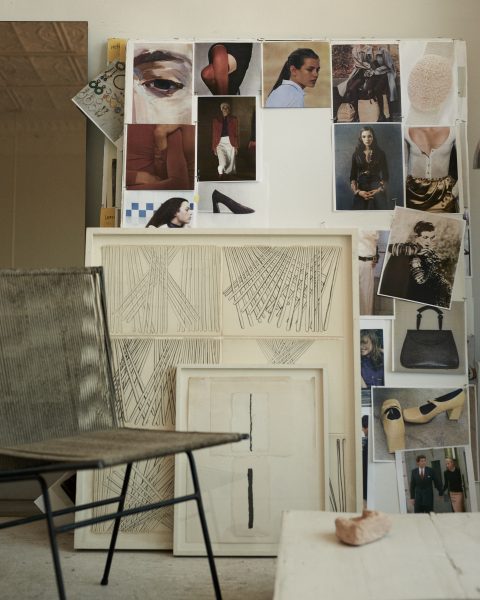
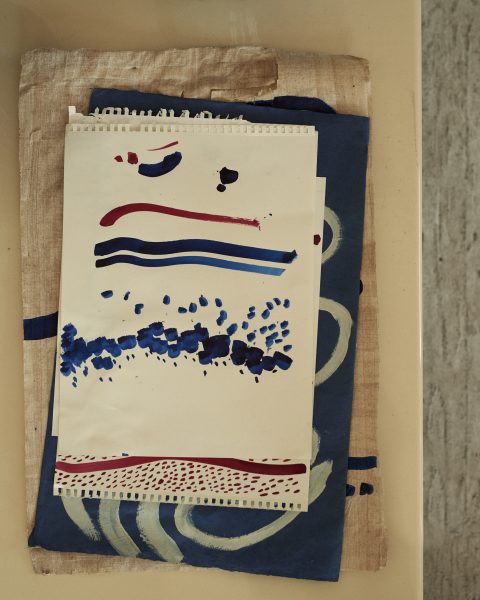
UM: You have a sensibility that attracts a lot of unique, talented women. Where do you think that comes from?
MNZ: Growing up I was always very close to my mother and grandmother, and in high school I had very close relationships with inspirational women. It’s natural for me to be attracted to women and sense what is best about them. I am sincerely inspired by all of them and want to celebrate their beauty and their talent through our friendship. Often, I’m drawn to a quality I find in them that I wish to cultivate in myself. Over time we end up building a real friendship and a very personal bond. There are aspects that pull us together and things that set us apart, which makes our dynamic even more interesting.
UM: You also seem keenly aware of how to create physical and digital identities that align with one another. What do you think makes your approach special?
MNZ: I feel my career is unique because I don’t just have one job. My career is the brand: the store, the design line, and the showroom. In general my approach to work, and everything I do, is very personal. I have never been one to keep the business and the personal separate. I started the store with Uday, and everyone I hire I tend to have a personal connection with. They become my family. On social media, for myself or for the brand, it’s sort of the same to me. My work is personal, so it doesn’t make sense to keep my personal life separate from that. I am also the one controlling all of the creative content—taking the photos and filtering when and how to share the material. It all comes from me. I used to share found images but I realized how much I love to take photographs and document events and the people I love. There is a lot to express and a lot of material for the brand to share: films, look books, personal travels, my children, intimate moments with friends. At times I can get overwhelmed with how to share and express it. Sometimes, I don’t mean to be so public but it’s hard for me to separate my life and my work. They’re both one and the same, and both are important to who I am and how I express myself.
UM: What do you look for in the women that you cast?
MNZ: I look for women that have a uniqueness about them, something that is inherently their own. The common thread is that they are all artistic, intelligent, strong, gentle, natural, inspirational, and beautiful, and I have a genuine connection with almost all of them.
UM: Who among your peers inspires you today?
MNZ: Melisa Denizeri, Jennifer Park, Gillian Garcia, Cassi Amanda Gibson, Carly Jo Morgan, Susan Cianciolo, Ana Kras, Sophie Buhai, Hailey Benton Gates, Delphine Danhier, Daphne Javitch, Laila Gohar, Simon Porte Jacquemus, Mike Eckhaus, Zoe Latta, Christophe Lemaire, Sarah-Lihn Tran, Dev Hynes.
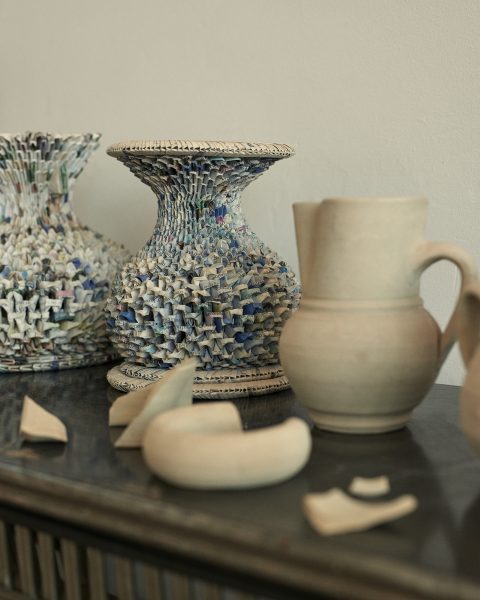
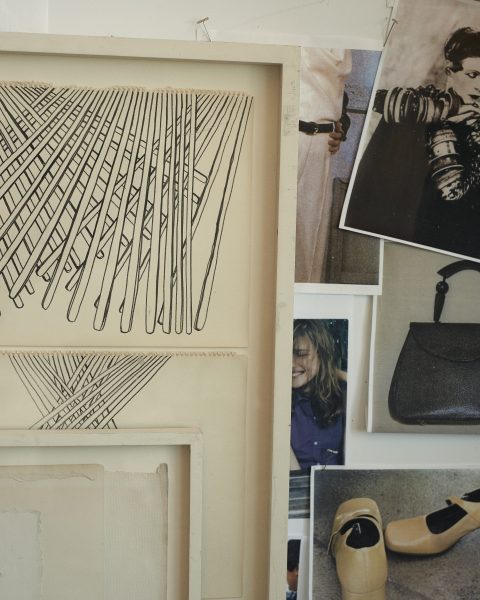
UM: There are a lot of brands that seem to follow in your creative footsteps to one degree or another. Is it a challenge to stay ahead of that?
MNZ: I don’t find it hard to stay ahead of brands that are inspired by my world. My relationship to my creativity is organic; it’s all about gut instincts and what moves me. I gravitate naturally to things that inspire me and my work flows from there. I try to focus on my own world and keep pushing it and growing. I like to challenge myself within my own realm rather than compare myself to others. The desire to create is within me.
UM: Do you feel like the women of MNZ tell you what they want or the other way around?
MNZ: My creative team and I work inside our world to build a collection that feels as close as possible to who we are at the moment. When we share it with our close friends and the store team and can see that they relate that is a pretty good indication that we got it right. Occasionally I’ll have someone tell me how much they miss a style we used to make, or that they’re looking for something and can’t find it anywhere and I’ll focus on that. But otherwise there isn’t much that affects what we put out as a whole.
UM: You seem so purely creative as an individual; did the business side come naturally to you?
MNZ: I do feel that I am creative at my core, but I also think that running a business and having a vision for a brand can be very creative. I think I have good instincts for business and what steps need to be taken in order to make everything happen. My intuitions are strong, so I generally let that lead me. There are personal weaknesses I have, which is why I always work to have a really strong team.
UM: How do you split your time between your roles these days?
MNZ: For many years, I used to manage everything and get bogged down running so much administratively. Everything has shifted now and I’m so grateful. I have built an incredible team who I trust to delegate things. Each person manages a specific area, which leaves me free to focus on the creative side. I realize that if the business is going to be sustainable, then I need to be fulfilled and happy. It’s very psychological; in order to be successful creatively I have to feel like I’m putting my energy where my heart is.
UM: What have been the biggest changes for you over the last decade?
MNZ: So many! When the store first opened it was our vision, Uday’s and mine, and we were doing everything together. As time went by we were able to step back from physically managing every aspect of the store. We faced many tough times, but I didn’t want to stop putting my time and effort into the brand. When that launched, it marked the beginning of a new phase. I was running more than one business and doing what I love: designing. Having the store as the foundation gave me the freedom to do the line on my own. The business is now more mature and in an entirely different stage. Now, everything flows and continues to grow on its own. But it only works because of the labor he and I both put into it. What I have learned is that if you really want to do something in your life, you can’t give up at any cost. You need to be proactive and work constantly at it and never compromise. You have be willing to do anything to keep it going. I learned how important it is to stick to things and trust what’s in your heart. Always let that direct your path.
This profile was originally published in Issue Nº6, 2017.
